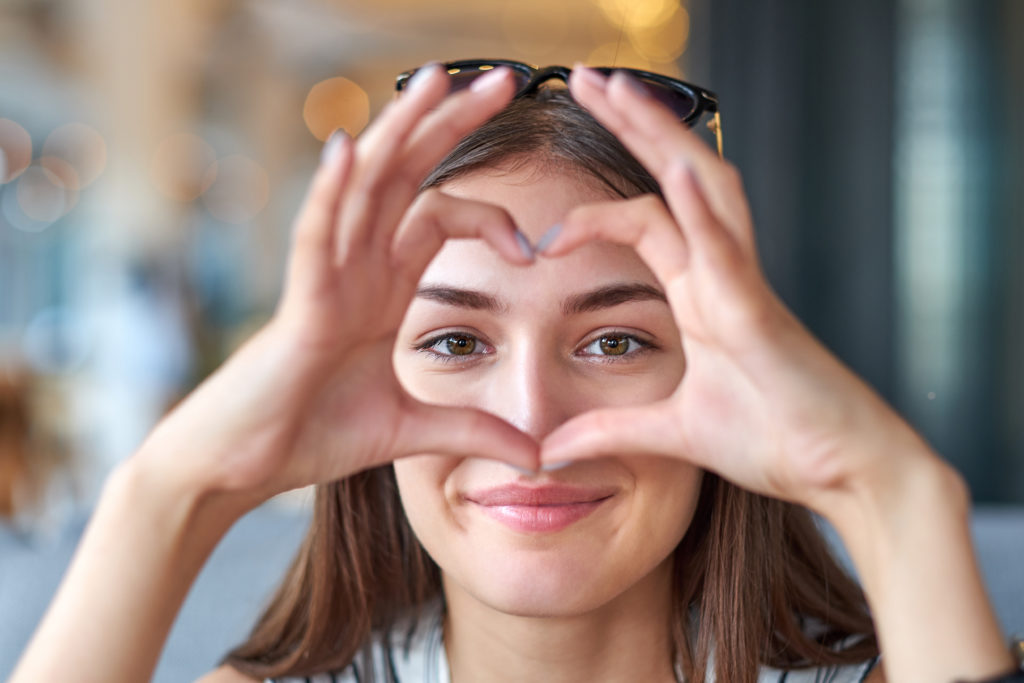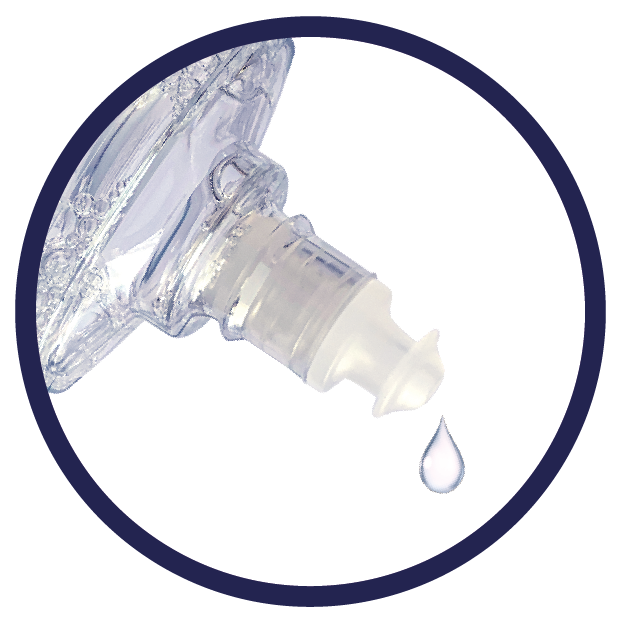v
New research shows how half of Brits are suffering from dry eyes thanks to screen marathons and totally oblivious to the health peril

Millions of Brits are putting their eye health at risk as pandemic working hours and frequent use of devices for leisure have led to screen times soaring. However, most sufferers are totally oblivious to the eye health perils of dry eye syndrome.
v
A research poll[1] by world experts in eye-care – Rohto[2] – has revealed that almost six out of ten adults now suffer from dry eye, a clinical cause of eye irritation, fatigue and discomfort.
And a similar proportion claim that their use of screen-based devices has increased since the lockdown, with a National Bureau of Economic Research survey confirming that the average working day is now nearly an hour longer.
Over half (55%) of adults questioned in the Rohto survey stare at a screen for five to seven hours a day, while a staggering 36% do this for 8 to 12 hours a day. Yet just 7 in 100 took the recommended amount of screen breaks.
Dry eye can lead to long-term eye damage
v
Optometrist, Francesca Marchetti, says: “Dry eye is caused by a lack of lubrication in the eye – either due to staring at a screen for hours without a break (and a lack of blinking), or because the tear glands are not working effectively. In a normal eye, the tear film[3] – the multi-layer moist protective film – covers the cornea and lubricates the eye. However, when eyes are overused, the tear glands don’t produce enough tears so dry spots appear on the surface of the eye. Hence, when our eyes do not have enough “fluid” in the first place and/or the lipids do not spread over the eye thanks to a lack of blinking dry eye is caused and our eyes can also experience irritation and discomfort.

“It’s vital to tackle this problem early – with regular use of dry eye relief drops which address as many aspects of the condition as possible and therefore break the vicious cycle of dry eye to avoid long-term damage to the cornea. The eye health brains from the world’s number one eye care brand2, Rohto, has launched the very latest science backed innovation to treat dry eye – New Rohto Dry Aid. It is a product innovation that is a must have for all dry eye sufferers. A scary 20% of people with dry eye end up with severe dry eye disease, affecting night vision, driving and reading. More on Rohto Dry Aid in a bit.”
v
The new research poll commissioned by Rohto also found that half of adults complained of irritated eyes and itchiness, while four in ten said their eyes were red, tired and sore. The frequency of these complaints was linked with the amount of screen time, with those enduring 51-60 hours a week being 50 per cent more likely to experience eye problems[4].
Why our eyes need 20 20 20 love
Francesca Marchetti comments: “Experts like me recommend that we give our eyes a break from screens every 20 minutes by looking at a distant object (20ft away) for 20 seconds and blink for 20 seconds – it’s called the 20 20 20 screen break rules (including usage of multiple digital devices). Yet, only a minority are doing this so it’s no wonder that four out of ten Brits say their lockdown screen habits are making their eyes feel worse than ever before.”
Contact lens wearers most at risk

Symptoms of dry eye are a particular problem for contact lens wearers as three quarters (74%) say they suffer from dry eye. Yet they could do more to help themselves as over a third admit sleeping in their contact lenses, whilst 43% have taken a shower wearing them!
Ageing also impacts since our body produces less hyaluronic acid from our 40s onwards and this is key for retaining moisture in the eyes. Hormonal changes before and during the menopause, and regular use of antihistamines, antidepressants and diuretics, also affect the amount of moisture in the eye.
INTRODUCING THE VERY LATEST EYE HEALTH, SCIENCE BACKED INNOVATION: New Rohto Dry Aid treats 8 symptoms of dry eye
The eye health brains at Rohto, have developed a new clinically-proven product to help manage dry eye. And new Rohto Dry Aid provides effective, soothing relief for up to 12 hours and is non-blurry. The ‘8 in 1[5]’ treatment for dry eye helps to tackle:
- Dryness
- Soreness
- Itchiness
- Irritation
- Burning
- Grittiness
- Stinging
- Tiredness.
Optometrist, Francesca Marchetti notes: “Many people suffer one or more of the main symptoms of dry eye but they don’t realise they have the condition. That’s why it’s great news that the New Rohto Dry Aid offers Tearshield Technology™ to hydrate, protect and restore the natural tear film, even in contact lens wearers and as a result, addressing key issues of dry eye and breaking its vicious cycle.”
NEW Rohto Dry Aid – the formulation includes:
- Povidone is a polymer with a wide range of pharmaceutical and medical applications.[6] It lubricates, protects, and soothes the surface of the eye, and works as a carrier to ensure that other active ingredients are integrated into all multi layers of the tear film. By bolstering the tear film, it also reduces water loss and protects the cornea.
- Propylene glycol is a well-tolerated synthetic liquid which attracts water and is clinically proven to help hydrate the tear film,[7] particularly the mucin area. By reducing friction, it prevents damage and subsequent inflammation of the mucin area.
- Sesame oil has a long history of use as a safe carrier for medicines delivered by intramuscular injection.[8] Sesame Oil also spreads more evenly over the eye, which ensures a greater uniform coating versus mineral oil, which is what most other eye drops use. More recently, it is one of a number of lipids with proven, and well tolerated, ophthalmic applications — particularly enhancing membrane permeability and cellular uptake of lipophilic molecules.[9] It has a very similar chemical structure to the lipid area of the tear film, an affinity which helps repair and maintain it. This also prevents evaporation from the aqueous area.
- PEG-10 Castor oil is another lipid with proven ophthalmic benefits, with studies showing it reduces corneal drying and helps stabilise and thicken the tear film. Trials confirm it also reduces tear evaporation,[10] and it extends dry-eye symptom relief by reducing Tear Film Break Up Time (TFBUT).
- Poloxamers are thermoresponsive, and when dispersed in water, turn into hydrogels. In Rohto Dry Aid, they work in two distinct modes: their lipid-friendly lipophilic block protects the ocular surface by binding to membrane lipids on the corneal epithelium cells or lipid area, while their hydrophilic blocks are water-retentive, contributing to tear film stability, all helping the surface of the eye.
- Electrolytes in the form of potassium and calcium create a positive environment for the corneal stem cells which allow it to repair and replace damage. This is achieved by maintaining a loser tear osmolarity, which reduces fluid loss from the cornea’s epithelial cells.
- Menthol is added to create a gentle cooling and refreshing sensation when the drops are applied.
- Polyhexamthylene biguanide is a mild, gentle, eye-friendly preservative used in contact lens solutions and eye drops, to ensure that the product remains safe to use for a certain period of time after its first opening. Rohto Dry Aid can therefore be used safely for up to 3 months after the bottle has been opened for the very first time. This ingredient also has proven antiviral and antibacterial properties.
- Magnesium sulfate has been shown to improve ocular blood flow and reduce oxidative stress. It is also being investigated as a possible treatment for glaucoma.[11]
In a recent 14-day trial[12], 94 per cent of trialists reported that Rohto Dry Aid was effective at soothing and hydrating their eyes, while 93 per cent would be very likely or likely to recommend the product to others. More than 8 out of ten found the product to be long lasting, while more than 9 out of ten agreed it was non-blurry. In just seven days – half the amount of time during which the study was conducted – 78 per cent of research respondents claimed their eyes were now comfortable all day.
Francesca Marchetti concludes: “Dry eye is now a major issue thanks to our growing screen use but most of us have no idea we are a sufferer of it. As well as people checking in with opticians, taking regular screen breaks and ensuring we are drinking plenty of fluids, a key step to more comfortable eyes is the regular use of clinically-proven dry eye relief drops. New Rohto Dry Aid offers the very latest in eye health innovation and technology, providing up to 12 hours relief and an 8[13] in one solution to dry eye.”
[1] Global Perspectus, Spring 2021; 1,109 nationally representative consumers questioned.
[2] Euromonitor International Limited; Consumer Health Eye Care definition, retail value share, 2020 data
[3] Tears are made up of several layers: the oily layer on the outside, the watery layer in the middle, and the inner, mucus layer. These layers together are known as the tear film.
[4] 47% of adults with <10 hours screen time per week suffer from dry eye compared with 69% of adults with 51-60 hours of screen time per week.
[5] Rohto Dry Aid helps relieve up to eight of the most troubling dry eye symptoms
[6] https://www.sciencedirect.com/topics/medicine-and-dentistry/povidone
[7] https://pubchem.ncbi.nlm.nih.gov/compound/Propylene-glycol
[8] https://www.drugs.com/inactive/sesame-oil-85.html
[9] https://www.ncbi.nlm.nih.gov/pmc/articles/PMC5655476/
[10] https://www.ncbi.nlm.nih.gov/pmc/articles/PMC5655476/
[11] https://www.ncbi.nlm.nih.gov/pmc/articles/PMC4897098/
[12] Independent consumer user trial of Rohto Dry Aid conducted over 14 days during winter 2020 with males and females aged between 20 and 66, including contact lens wearers; UK[13] Refers to 8 dry eye symptoms